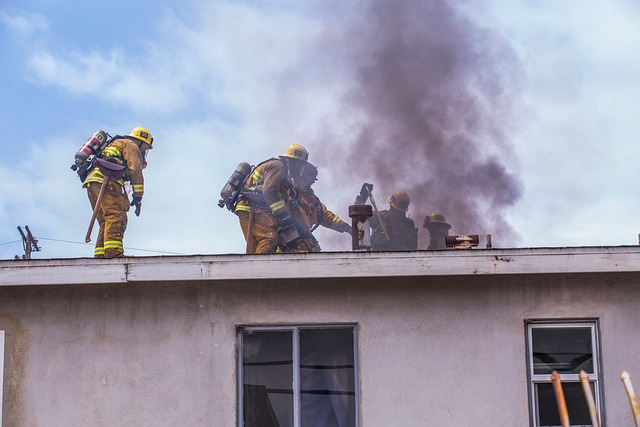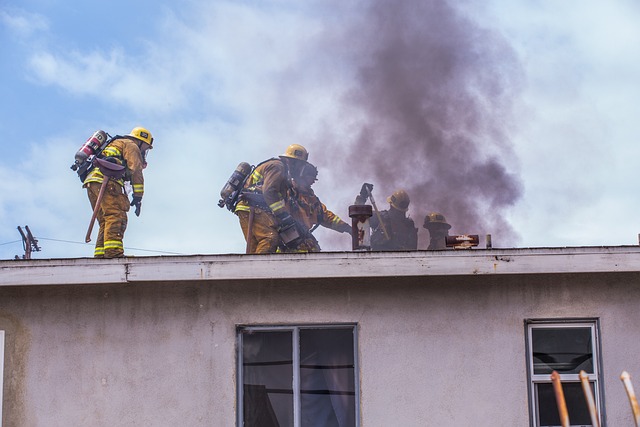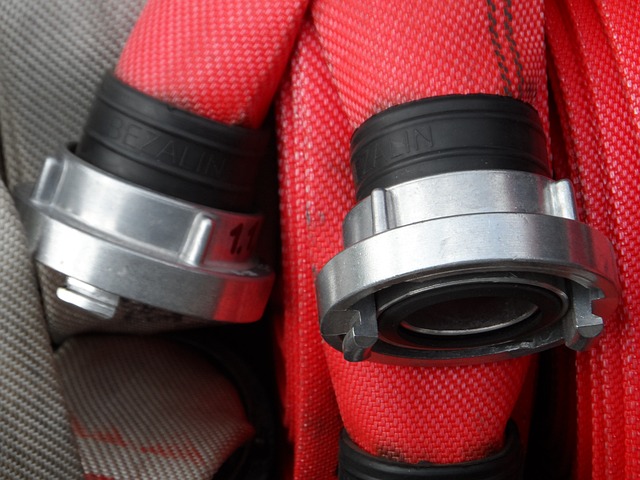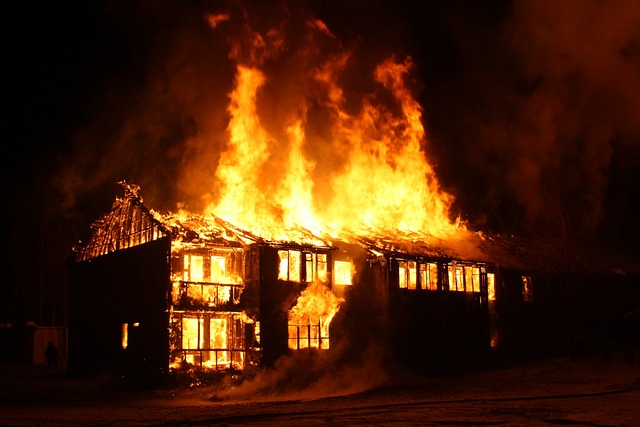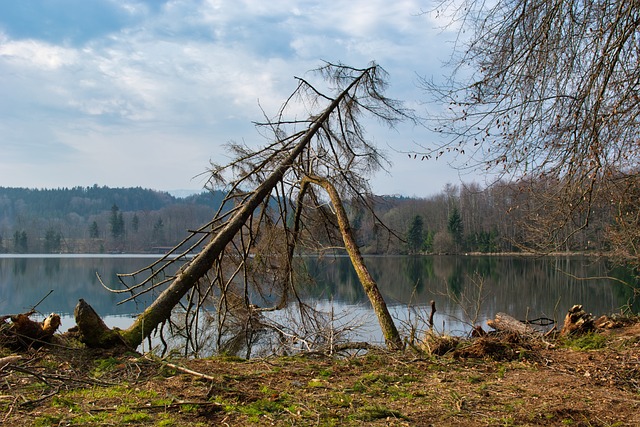Water and fire damage are significant concerns for California homeowners, impacting property value and saleability. To prepare a home for sale after such damage, prioritize swift action: assess and document damage, halt leaks immediately, and engage professionals for extensive or hidden water/fire restoration. Mitigate further harm through dehumidification, proper ventilation, and monitoring humidity levels. Structural repairs ensure integrity, using water-resistant materials to prevent future deterioration. Proactive prevention like drainage systems, crack sealing, and regular inspections safeguard against recurring damage. Navigating insurance claims requires thorough documentation, understanding policy limits, and timely communication with providers for optimal compensation when selling a house with fire damage in California.
Water damage mitigation is a crucial aspect of home ownership, especially in California’s prone-to-disaster regions. This comprehensive guide equips California homeowners with essential knowledge for navigating fire and water damage scenarios, from initial assessment to insurance claims. Learn effective strategies for drying out homes, restoring structural integrity, and preventing future damage. Discover how to maximize compensation when selling a house with fire damage in California by understanding the ins and outs of insurance claims processes.
- Understanding Water Damage Mitigation: A California Homeowner's Guide
- Assessing Fire and Water Damage: The First Steps After a California Fire
- Dry Out Your Home: Effective Dehumidification Techniques
- Restoring Structural Integrity: Repairs After Severe Water Damage
- Protecting Your Property: Preventing Future Water Damage in California Homes
- Navigating Insurance Claims: Maximizing Compensation for Fire and Water Damage
Understanding Water Damage Mitigation: A California Homeowner's Guide

Water damage is a common issue in California homes, often caused by heavy rainfall, flooding, or leaky pipes. When water intrudes into your property, swift action is crucial to mitigate potential long-term harm. Understanding water damage mitigation isn’t just about selling your house with fire damage California; it’s about protecting your investment and ensuring the safety of your family.
Knowing the right steps can make all the difference in a successful recovery process. It starts with assessing the extent of the damage, identifying the source, and taking immediate measures to stop any ongoing leaks. From there, documenting the entire process through photos is essential for insurance claims. Professional help should be considered for extensive or hidden water damage, especially when selling your home, as it ensures a thorough restoration and increases the property’s value.
Assessing Fire and Water Damage: The First Steps After a California Fire

After a fire, assessing the extent of water damage is crucial for any homeowner in California looking to sell their property. The first step is to ensure safety by evacuating the area and preventing further harm. Once it’s secure, inspect the home thoroughly, noting visible signs of water intrusion, smoke damage, or charred walls and ceilings. Check for moisture levels using tools like a hygrometer or by observing musty odors and discolored surfaces.
Documenting the damage is essential for insurance claims and potential buyers. Take detailed photos or videos of affected areas, including close-ups of water stains, mold growth (if visible), and any structural damage. This visual evidence will help when negotiating repairs or selling a house with fire damage in California.
Dry Out Your Home: Effective Dehumidification Techniques

After a fire, it’s crucial to address water damage mitigation to prevent further issues and ensure your home is safe to sell. The first step in this process is effective dehumidification. High humidity levels can create an ideal environment for mold growth, which not only poses health risks but also reduces the overall value of your property, especially when potential buyers consider how to sell a house with fire damage California.
Utilize high-quality dehumidifiers and place them in strategic locations throughout the affected areas. Ensure proper ventilation by opening windows (weather permitting) and using fans to circulate air. Check and replace filters regularly to maximize efficiency. Monitor humidity levels with a hygrometer to confirm they remain below 50%—the ideal range for preventing mold growth.
Restoring Structural Integrity: Repairs After Severe Water Damage

After severe water damage, restoring a home’s structural integrity is paramount before considering how to sell a house with fire damage in California. The first step involves assessing and addressing any compromised walls, floors, or foundations. Professional restoration services can provide expert advice on repairs, ensuring the safety of occupants and potential buyers. Structural engineers may need to inspect and recommend solutions tailored to the specific damage.
Repairs should aim to prevent further deterioration and strengthen the structure. This includes replacing affected materials like drywall, wood, or insulation with new, water-resistant alternatives. In some cases, reinforcing beams or installing support columns might be necessary. Properly executing these repairs not only enhances safety but also increases a property’s appeal to prospective buyers, potentially offsetting the initial investment in restoration for a smoother sale.
Protecting Your Property: Preventing Future Water Damage in California Homes

Protecting your property from water damage is crucial, especially in California where homes are often at risk due to frequent rainfall and potential flooding. After experiencing water damage, it’s essential to take proactive measures to prevent future incidents and ensure the value of your home remains high. One effective strategy is to invest in proper drainage systems around your property. This includes clearing gutters regularly and installing downspout extensions to direct rainwater away from the foundation and basement areas.
Additionally, sealing any cracks or gaps in walls, foundations, and ceilings can deter water intrusion. Homeowners should also consider using moisture barriers and waterproof membranes, especially in areas prone to high humidity or potential leaks. Regular maintenance and inspections are key; checking for signs of water intrusion, leaks, or mold growth, and addressing them promptly will significantly reduce the chances of severe water damage. These steps are vital for anyone looking to sell a house with fire damage California, as they demonstrate a commitment to preserving the home’s integrity and value.
Navigating Insurance Claims: Maximizing Compensation for Fire and Water Damage

Navigating insurance claims is a crucial step in mitigating water and fire damage, especially when preparing to sell a house in California. The first step is to document all damage thoroughly, taking photos and videos as evidence. This includes both visible and hidden issues caused by fire or water intrusion. In California, homeowners should review their policy to understand coverage limits for repairs and replacement costs. Many policies require prompt notification of claims, so immediate action is essential.
To maximize compensation, it’s beneficial to communicate openly with insurance providers. Keep detailed records of all communications and maintain a comprehensive file of all documentation related to the damage. This may include repair estimates, invoices, and any correspondence with adjusters or underwriters. In the case of fire damage, understanding the cause and extent of the fire is critical; professional firefighters can provide valuable insights for insurance claims. For water damage, knowing when and how the incident occurred can help demonstrate negligence or lack thereof, influencing the compensation outcome.
Selling a home affected by fire and water damage in California can be challenging, but understanding the proper mitigation process is key. By quickly assessing the situation, implementing effective drying techniques, repairing structural integrity, and taking preventive measures, you not only enhance your home’s chances of recovery but also maximize its value. Remember, knowing how to navigate insurance claims is crucial for obtaining fair compensation, ensuring a smoother transition towards rebuilding or selling. With the right approach, even after devastating fires and water damage, California homeowners can find success in their property endeavors.

